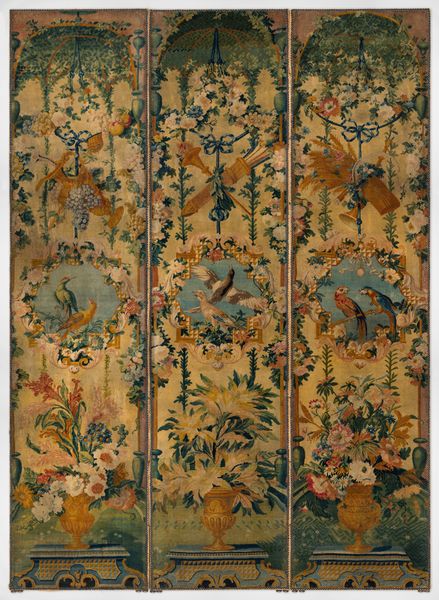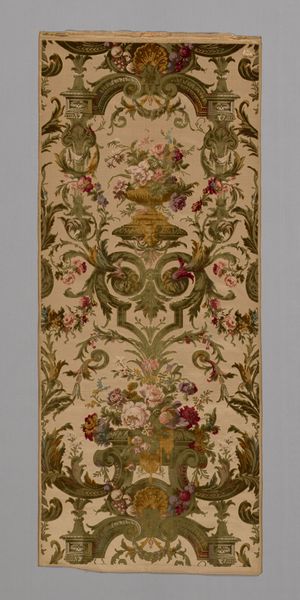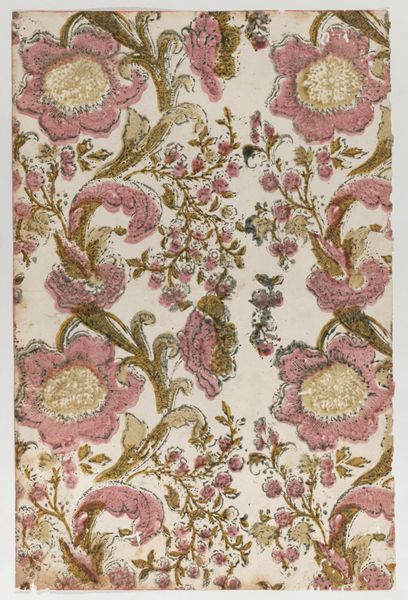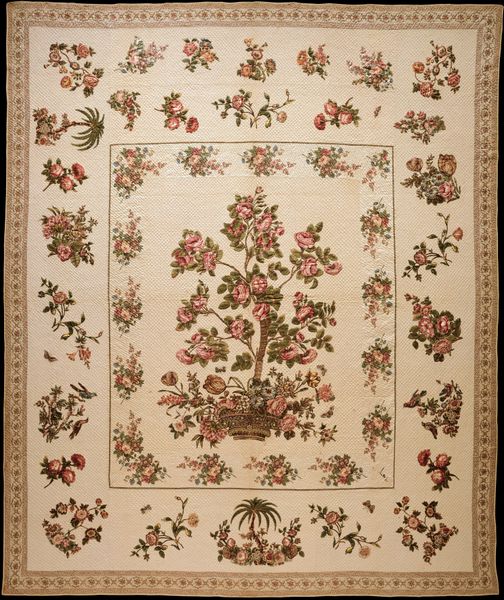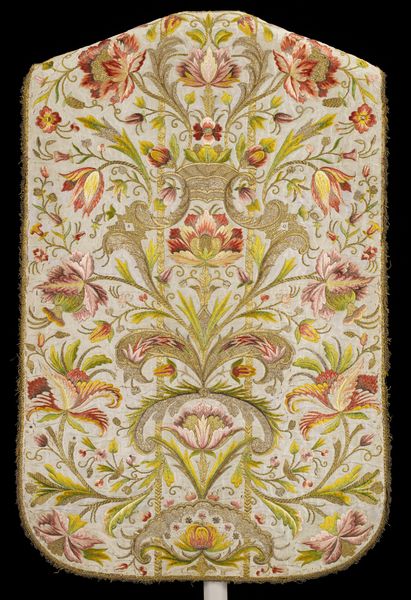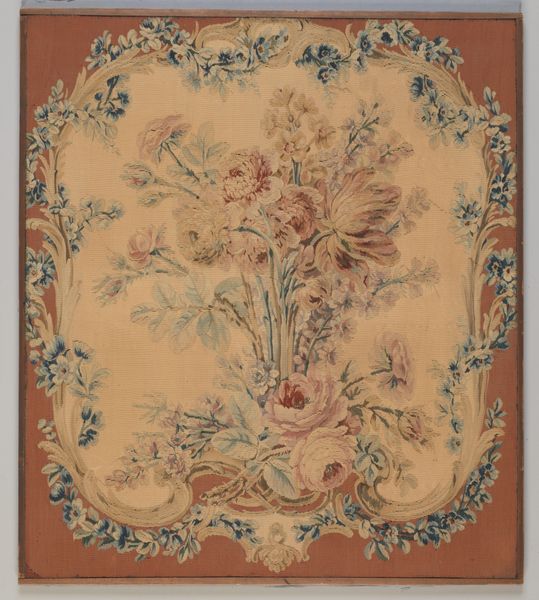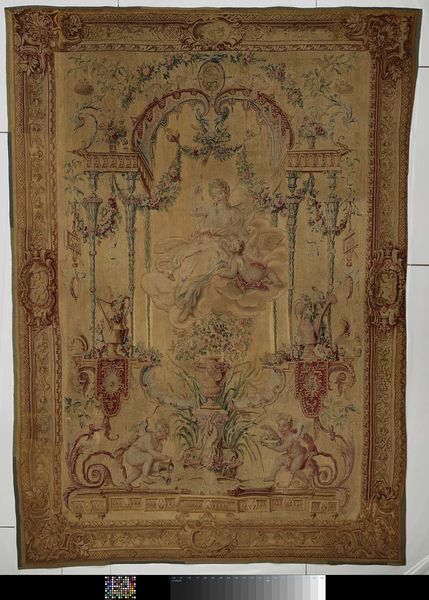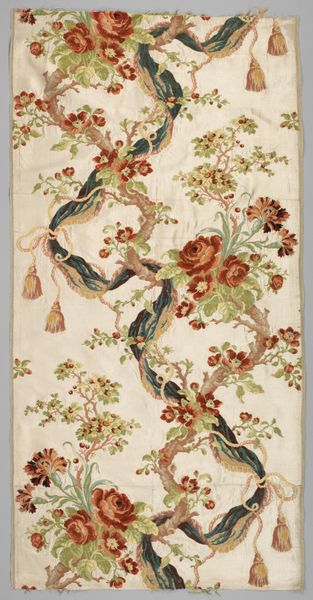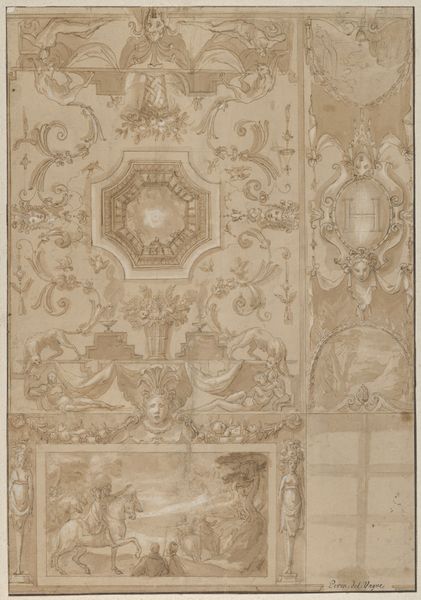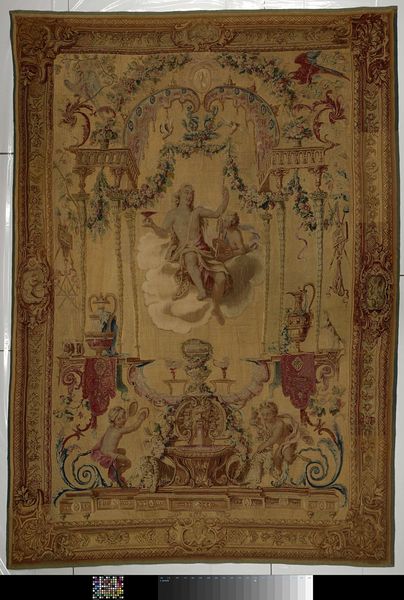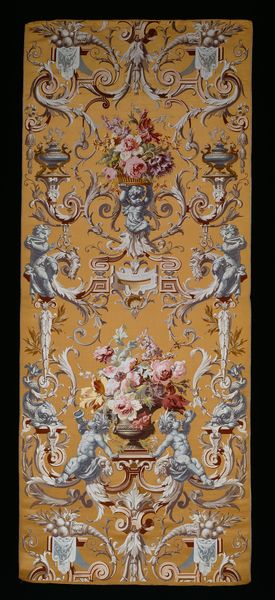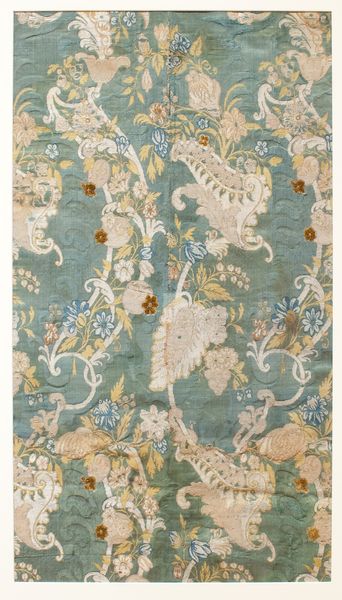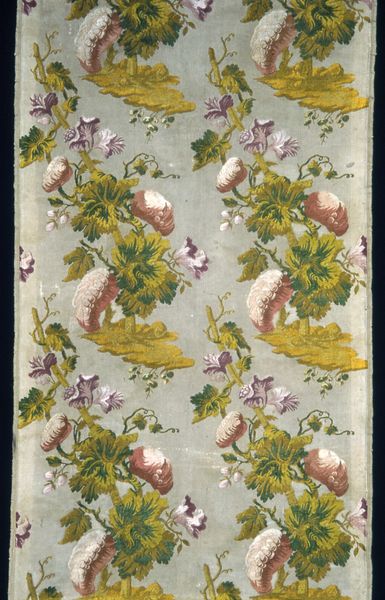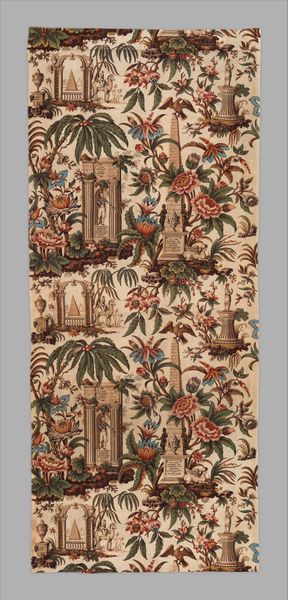
fibre-art, weaving
#
portrait
#
fibre-art
#
allegory
#
narrative-art
#
weaving
#
landscape
#
genre-painting
#
history-painting
#
rococo
Copyright: Public domain
Editor: This textile artwork, titled "A Panel from a Porticoes Series," is by Jean-Baptiste Oudry and done in weaving. The soft colors give it a delicate feel. The two columns create a central division, drawing my eye back and forth. How do you interpret this work from a design perspective? Curator: Consider the interplay between representation and the tapestry's very being as woven fibre. Note how the formal devices of classical architecture—columns and entablature—structure the composition, dividing the field. These vertical and horizontal lines give order. Do you observe the distribution of floral motifs and the contrasting subject matter within each section? Editor: Yes, on one side, there's this tranquil swan scene, and on the other, a hunting scene. The floral elements almost seem to soften those harsher divides. Curator: Precisely. The rose garlands serve to mediate between the rational architecture and the natural, somewhat chaotic scenes below and above. Observe also the precise rendering of each thread, mimicking brushstrokes in painting to create illusions of depth and texture. Where does your eye rest when regarding the overall structure of forms? Editor: I think my eye is drawn to the swan and then to the hunting dogs. They almost act like anchors that pull you down into the tapestry. The arrangements above act to draw my eye back up, so I'm moving up and down a lot. Curator: Indeed, the push and pull create a dynamic viewing experience. Reflect, if you will, on how Oudry manages to imbue the structured regularity of architectural forms with the softness and decorative excess characteristic of the Rococo. A panel from a Porticoes series it may be, but, the real subject may well be artifice, beauty and aesthetic effect. Editor: That's so interesting. I originally saw it as a decorative textile, but now I see a real visual strategy at work. Curator: Indeed, engaging with the piece from its formal and structural aspects grants a heightened understanding of Oudry's approach and possibly his era.
Comments
No comments
Be the first to comment and join the conversation on the ultimate creative platform.
